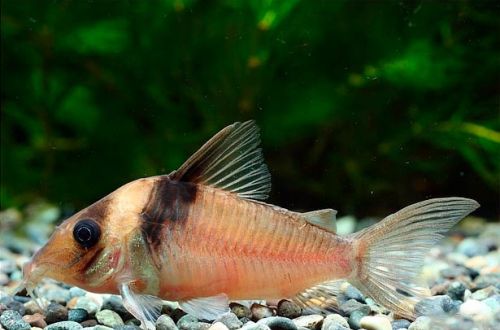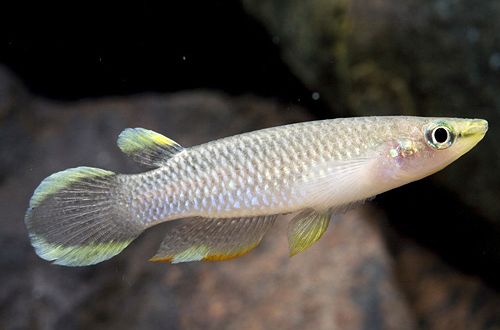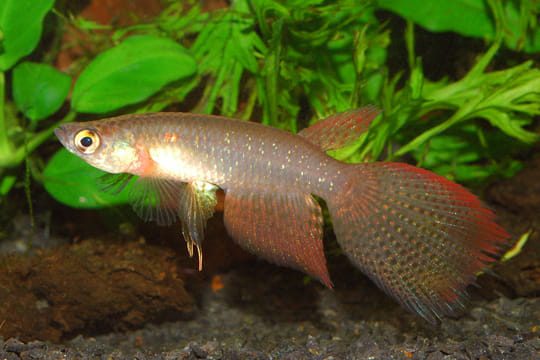
Pterolebias golden
Pterolebias golden, scientific name Pterolebias longipinnis, belongs to the family Rivulidae (Rivulaceae). Rare fish outside of their natural habitat. It’s all about the extremely short life expectancy, reaching about one year. However, on sale you can find not live fish, but caviar. It retains its viability without water for months, which allows it to be transported over long distances.

Contents
Habitat
The fish is native to South America. Inhabits vast expanses of the Amazon and Paraguay river basins. It lives in temporary reservoirs, puddles formed during the rainy season.
Description

Adults reach a length of up to 12 cm. Due to the large natural habitat, there are many regional color forms. In any case, males look brighter than females and have large fins, decorated with specks in the color of the main color. Colors can vary from silver to yellow, pink and red. Females are mostly grey.
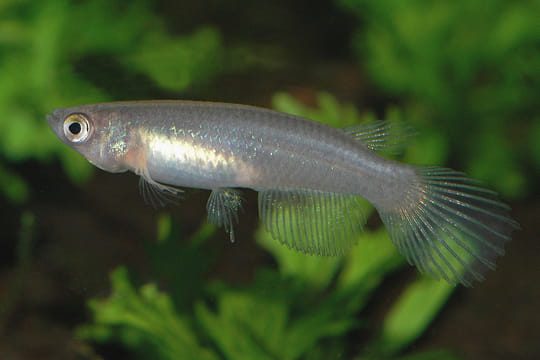
In the wild, fish live only one season, which can last from a couple of months to six months. Life expectancy is completely dependent on the existence of a temporary reservoir. In such a short period of time, the fish have time to be born, grow up and give new offspring. Fertilized eggs remain in a layer of silt of a dried-up reservoir for several months until the onset of the rainy season.
In aquariums, they live longer, usually more than one year.
Behavior and Compatibility
Due to the peculiarity of life in drying up reservoirs, these fish usually do not have neighbors. Sometimes representatives of other types of Killy fish can be with them. For this reason, keeping in a species tank is recommended.
Males compete for the attention of females and arrange skirmishes with each other. However, injuries are extremely rare. However, in an aquarium it is desirable to maintain a group composition of one male and several females. The latter are very friendly.
Brief information:
- The volume of the aquarium – from 80 liters.
- Temperature – 17-22°C
- Value pH — 6.5–7.0
- Water hardness – soft (1-10 dGH)
- Substrate type – any dark
- Lighting – subdued
- Brackish water – no
- Water movement – little or no
- The size of the fish is about 12 cm.
- Nutrition – foods high in protein
- Temperament – peaceful
- Keeping a group in the ratio of one male and 3–4 females
- Life expectancy about 1 year
Maintenance and care, arrangement of the aquarium
Pterolebias golden is considered an unpretentious and hardy species. As a rule, keeping annual fish involves breeding to preserve the population. For this reason, a soft fibrous substrate is used in the design, for example, from coconut fiber or another similar material. The purpose of this substrate is to preserve the eggs and be able to remove it entirely from the aquarium.
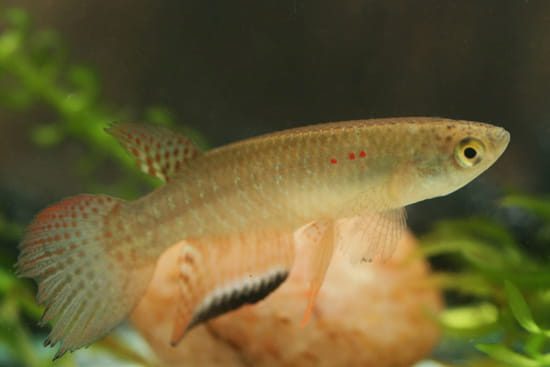
The rest of the decoration may include floating plants, driftwood, branches, a layer of tree leaves.
A simple airlift filter with a sponge is used as a filtration system. The use of other water purification systems is not advisable. The lighting system is optional. The light coming from the room will be enough.
Food
The basis of the diet should be live or frozen food, such as bloodworms, brine shrimp, daphnia, etc.
Breeding and reproduction
Fish easily breed in aquariums. However, caviar preservation is a problem. Sexually mature Pterolebias lay their eggs directly into the ground. In the wild, they burrow lightly into soft substrate to keep the eggs safer.
The substrate with eggs is removed and dried. Before drying, it is recommended to thoroughly but gently rinse the substrate to remove food residues, excrement and other organic waste. Otherwise, there is a high probability of mold and mildew formation.
The incubation period lasts from 3 to 6 months and depends on the combination of humidity and temperature. The higher the temperature and the wetter the substrate, the shorter the incubation time. On the other hand, with excessive moisture, the loss of all eggs is possible. The optimum temperature is 24-28°C.
After the time has elapsed, the substrate with eggs is placed in an aquarium with water at a temperature of about 20–21 ° C. The fry appear after a few days.



